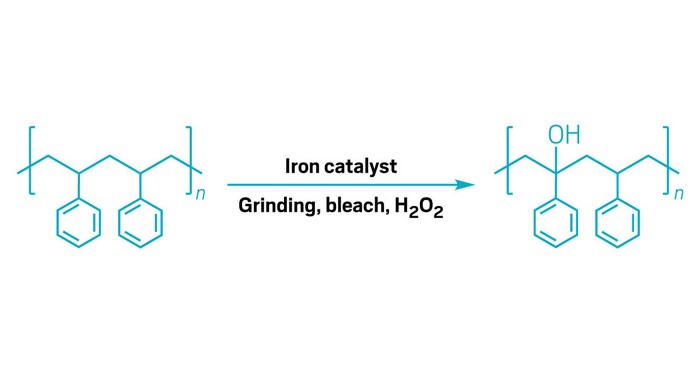Advertisement
Grab your lab coat. Let's get started
Welcome!
Welcome!
Create an account below to get 6 C&EN articles per month, receive newsletters and more - all free.
It seems this is your first time logging in online. Please enter the following information to continue.
As an ACS member you automatically get access to this site. All we need is few more details to create your reading experience.
Not you? Sign in with a different account.
Not you? Sign in with a different account.
ERROR 1
ERROR 1
ERROR 2
ERROR 2
ERROR 2
ERROR 2
ERROR 2
Password and Confirm password must match.
If you have an ACS member number, please enter it here so we can link this account to your membership. (optional)
ERROR 2
ACS values your privacy. By submitting your information, you are gaining access to C&EN and subscribing to our weekly newsletter. We use the information you provide to make your reading experience better, and we will never sell your data to third party members.
C-H Activation
Activating C–H bonds with isolated atoms
Copper decorated with lone platinum atoms catalyzes alkane conversions and resists fouling
by Mitch Jacoby
January 15, 2018
| A version of this story appeared in
Volume 96, Issue 3
Sprinkling individual platinum atoms across a copper surface yields an energy-efficient and durable bimetallic catalyst that effectively mediates reactions involving C–H bond activation, according to a study (Nat. Chem. 2018, DOI: 10.1038/nchem.2915). Breaking C–H bonds is the first step in converting relatively inert compounds such as methane and other alkanes to more valuable fuels and chemicals.
Industrial processes for carrying out this type of chemistry are well developed. Many manufacturers rely on steam cracking, for example, to convert ethane to ethylene. But that process is energy intensive. Catalysts can mediate C–H-activation chemistry and reduce the required energy input, but they have shortcomings.
Platinum, for example, can dramatically reduce the temperature for C–H activation, but it is expensive. Nickel, which is relatively inexpensive, also works as a C–H activation catalyst, but both it and platinum are prone to coking, a process that generates a film of carbon (coke) that gunks up the catalyst surface and blocks reagents’ access to catalytic sites. Copper resists coking but it is a weak catalyst.
So in a follow-up to earlier work with single-atom catalysts, E. Charles H. Sykes and Maria Flytzani-Stephanopoulos of Tufts University and Michail Stamatakis of University College London conducted catalytic reaction tests on methyl groups, methane, and butane using copper surfaces dotted with isolated platinum atoms. The team found that compared with pure copper, the bimetallic catalysts avoid coking and lower the C–H activation temperature by 100 °C or more depending on the reaction. The bimetallic catalysts address the platinum cost problem by using the metal as sparingly as possible on the copper surfaces.



Join the conversation
Contact the reporter
Submit a Letter to the Editor for publication
Engage with us on Twitter